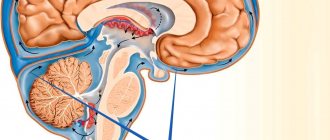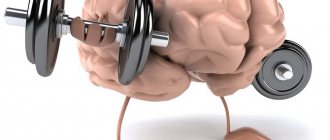The present time is referred to as the age of brain research. One of the most interesting topics in scientific research on this organ has been the ability of the brain to change its structural and functional properties in response to a person's experiences throughout life. For most of history, neuroscientists believed that the basic structure of the brain was predetermined before birth, and the only changes that could occur were degenerative, the result of disease, injury (concussions, TBI). Modern scientists have directed research towards brain restoration. What conclusions did they come to? Is the brain recovering or not?
Research results
Two major discoveries were made by scientists involved in neural networks and human brain research. A study published in Cell Stem Cell reports that Japanese doctors have begun culturing human brains. The journal Science presented material on how chemical destruction was prevented by stimulating the regeneration (renewal) of the brain and spinal neural network.
A neuron is a structural unit of nervous tissue that, under a microscope, resembles a body with tentacles. The task of a neuron is to receive and process information.
The Japanese started from brain cells, which, through appropriate cultivation, were multiplied tenfold and enriched in accordance with the structure of the brain of a human embryo. It was also discovered that in the resulting particles of brain matter, the size of which is 1-2 mm, neural activity, measured in electromagnetic impulses, spontaneously arises. Scientists from the city of Kobe believe that in the future it will be possible to create structures of brain tissue that can be implanted in place of parts damaged by disease (ischemic stroke, multiple sclerosis, etc.) or injury.
Brain neurons are not able to regenerate like their counterparts in nerve endings. Another way to save damaged parts of the brain or spinal cord (damage often leads to serious consequences, including paralysis, coma) is to activate the possibility of regeneration in both main organs of the nervous system. In experiments on mice, a team led by Dr. Che Qiang at Harvard Medical School in Boston was able to answer the question of whether brain cells repair themselves by chemically influencing the process. In mice, scientists used genetic engineering to stimulate the release of a substance called mTOR, which responds to neuronal regeneration. It is present in the newborn, but is destroyed in the adult, especially after injury. Thanks to this process, scientists were able to restore almost half of the damaged optic nerve in a short time (2 weeks). Even the formation of new axons has been recorded.
Che Qian concluded: “We knew that after development ends, networks stop growing due to genetic mechanisms. We believe that one of these mechanisms may also restore regeneration and stop death after injury."
Advances in emergency medicine have ensured that more brain-injured patients survive. Today it is known that the adult brain is capable of rearranging its functional connections, creating new ones, and changing physiological parameters. This phenomenon is called neuroplasticity; it has become the basis for the treatment of central nervous system diseases of various origins.
Fewer cells die and more form in autistic people. It can be said that autism, paradoxically, is a disorder that has beneficial effects on the brain.
Hippocampus and brain recovery
According to recent data, the human brain contains about 85 billion nerve cells (neurons). It is known that throughout life there is a gradual loss of these cells (they begin to die around the age of 30).
One of the first studies to generate interest in brain plasticity among lay people was conducted by Eleanor Maguire of University College London. She found that London taxi drivers have much more developed hippocampi than bus drivers. The hippocampus is the part of the brain responsible, among other things, for the perception of space. Given the fact that taxi drivers must remember many street names, their placement and connections, it has been suggested that this change is caused by training in spatial orientation, which bus drivers lack.
The problem with this study is that it does not distinguish between innate and acquired function. In this context, interesting results were provided by studies of violinists, which established that these musicians have a much larger surface area of the motor cortex related to the fingers of the left hand. This corresponds to the fact that when playing the violin, each finger of the left hand must make an independent movement. In this case, on the right hand, all fingers work together. The objection to the possibility of a genetic predisposition is countered by the fact that the difference between the organization of the left and right hemispheres is directly proportional to the age at which musicians began to play the violin.
Reorganization of the cerebral cortex has also been observed in people with congenital visual or auditory defects. According to the “use it or loose it” principle, the unused cerebral cortex can be used by another function. Areas originally dedicated to processing visual or auditory stimuli are deprived of them, and their space is used for other functions, such as tactile. Reorganization is the result of the growth of long processes of neurons, axons. After a head injury that damages the brain, neural connections can be restored or replaced with new connections that compensate for the lost function in another part of the brain.
One of the great surprises of recent times is the discovery that the adult brain can, in some areas, create entirely new neurons from stem cells, a process influenced by human experience.
Some useful information about neurons
Neurons, unlike all other cells in our body, “do not know how” to divide, so until recently scientists were convinced that a person lives his entire life with the limited supply of nerve cells that he received at birth. The results of numerous modern studies have shown that this statement is not true, since neurons are still created throughout our lives. This happens thanks to stem cells, which have the ability to transform into cells of almost any type.
Our brain has its own supply of stem cells. Scientists cannot yet determine the exact number of departments involved in the formation of new nerve cells. What the scientific community knows is that new neurons are formed in the dentate gyrus of the hippocampus, which is responsible for memory and emotion, and a thin layer of cells located along the ventricles of the brain (subventicular zone).
Many newly formed neurons die almost immediately due to the active work of neurotransmitters, the negative influence of the microenvironment, certain proteins and other chemistry occurring in our brain.
In order for a newly formed nerve cell to continue to exist, it needs to form a neural connection (synapse) with other nerve cells. Since the brain does not need lonely floating neurons at all, it simply destroys them, because they do not bring it any benefit and will not be able to bring it in the future. The same neurons that were able to establish connections with other nerve cells are successfully integrated into the structure of our brain.
Every day, about 700-800 neurons can be integrated into the structure of the brain, which managed to survive and form new neural connections.
Brain-programmed cell death, or apoptosis, is a completely normal process that should not be feared. With the help of apoptosis, the brain restores order and gets rid of unnecessary neurons.
The average adult brain consists of approximately 85-88 million nerve cells.
The brain of a newborn contains many more neurons, but by the end of the first year of life their number is almost halved. Psychophysiologist and employee of the Psychological Institute of the Russian Academy of Education Ilya Zakharov explains this by the fact that the human brain develops most actively in the first three years after birth.
Why is this happening? The fact is that it is during this period of time that the child actively explores the world around him: he constantly touches something new, smells it, sees it, tastes it or touches it, etc. All new knowledge is recorded in the baby’s brain in the form of new neural connections, thanks to which all formed and already consolidated skills, all acquired emotional and intellectual experience are preserved.
Although the human brain develops in this way throughout life, it makes its “main breakthrough” in early childhood.
Neurogenesis
Information not known to the general public is that the brain creates new cells throughout life. This phenomenon is called neurogenesis.
The human brain is made up of many parts (but not all of them undergo cellular renewal). Neurogenesis occurs in the area responsible for the sense of smell and in the hippocampus, which plays an important role in memory quality.
Experts have also discovered that damaged brains also produce new cells. Evidence of higher neurogenesis during illness was presented by New Zealand's University of Auckland, which studied people with Huntington's disease, in which a person's mental abilities decrease and uncoordinated movements appear. The creation of new neurons was most intense in the most affected tissues. Unfortunately, this is not enough to suppress the disease. Identifying the conditions under which this process occurs and stimulating it could lead to treatments for Huntington's or Parkinson's disease by transplanting stem cells into the affected areas of the brain.
Medical science is taking its first steps in studying brain neuroplasticity. The next step is a precise description of the conditions under which its changes occur, determining the specific impact on individual functions in human life. Understanding and using knowledge of neuroplasticity also requires analysis of genes associated with the growth of axons or neurons from stem cells.
Brain restoration methods
The treatment complex begins with active detoxification. Then a course of drug therapy is carried out. At the same time, correction of nutrition and lifestyle is required.
- Withdrawal syndrome: a sharp craving for alcohol and the painful withdrawal state associated with it must be treated in a clinic. Those suffering from alcoholism are given a course of infusions that wash away alcohol and its metabolites. Drugs are administered to stabilize the physical and mental state. It is recommended to recover at home only at the initial stage of addiction. This requires one thing - to ignore alcohol.
- To eliminate bad mood, frustration and other adverse consequences, it is important to eat right: eat a lot of protein foods, vegetables, and fruits. You cannot increase the stress of quitting alcohol with starvation diets and various fasting sessions. It is important to prevent hypovitaminosis and mineral deficiency in the body.
- Physical and mental activity is required. Sports should be complemented by an interesting hobby. You can master a new profession, learn a foreign language, or perform special sets of exercises to develop memory. This stimulates the brain and keeps its functions active.
The widespread belief that addicts need to wean themselves off alcohol gradually is harmful and unfounded. Alcohol, even if it has become part of the body’s metabolism, must be eliminated immediately. Modern medications provide satisfactory well-being for patients at any stage of alcoholism. The faster you can get rid of neurotoxic poison, the greater the chance of maintaining physical health and mental health.
The importance of neurogenesis
Recent estimates indicate that the hippocampus produces about 700 new brain cells every day. At first glance, this number does not seem large, but the creation of each new neuron is very important, especially for the psychological state of a person. If the formation of new cells stops, depression and psychosis begin to appear. Restoration of brain neurons is important for learning, memory, intelligence (study of certain places, orientation in space, quality of memories).
Recent scientific research has shown that it is possible to improve the production of new brain cells on your own, i.e. at home. What types of activities have a positive effect on the formation of neurons?
Neuron production increases:
- education;
- sex;
- training of cognitive functions;
- mnemonics;
- physical activity (significant help);
- nutrition (regular meals, longer pauses between meals)
- vitamin P (flavonoids);
- omega-3 (also a good antidepressant).
Neuron production decreases:
- stress;
- depression;
- lack of sleep;
- diets rich in saturated fats;
- anesthesia used during surgery;
- alcohol;
- drugs (especially Amphetamine);
- smoking;
- age (with age, neurogenesis continues, but slows down).
Neurons can die in a number of diseases:
- epilepsy – cell death occurs during an attack;
- cervical osteochondrosis – neurons die due to poor circulation;
- hydrocephalus;
- encephalopathy;
- multiple sclerosis;
- Parkinson's disease is a disease characterized by impaired mobility of the legs, arms, and cerebellar signs (due to damage to the amygdala);
- Alzheimer's disease is a disease that leads to dementia, a disorder of speech functions (due to damage to speech receptors).
Neurons may temporarily stop renewing when you take certain cancer drugs. Therefore, after treating cancer with pharmaceutical drugs, people suffer from depression. After restoration of neurogenesis, depression disappears.
It is safe to say that the formation of new brain cells occurs naturally in healthy people. However, whether the process will speed up or slow down largely depends on the person himself.
What is neurobics?
Neurobics is a special set of exercises developed by neurobiologist Professor Lawrence Katz. This technique was developed based on the scientist’s own observations, as well as generally accepted principles of the human brain.
This concept was actively developed by the American neuropsychologist Roger Sperry, who in 1981 received the Nobel Prize for his discoveries regarding the functional specification of the cerebral hemispheres.
Neuroscience states that when you regularly perform the same work, the brain's ability to focus and concentrate on new things deteriorates. Memory begins to gradually weaken.
Neuroscience clearly proves that brain cells are capable of restoring and improving their functioning - with regular implementation of simple and accessible exercises.
They effectively develop the brain, increase memory and concentration. The technique increases the ability to memorize new information and teaches a person to think outside the box, developing creativity.
A panic attack is not a disease, but a clear symptom of a malfunction in the body. In the initial stages of an attack, you can stop it yourself. The concept of a panic attack A panic attack is usually understood as a type of anxiety disorder, which refers to disorders of a neurotic nature. Read more in the article: “how to cure panic attacks on your own forever.”
One of the features of neurobics is that during the exercises all 5 human senses are involved - hearing, vision, taste, touch and smell. Due to this, various departments in the brain are activated, which after a short time begin to work much more efficiently, more harmoniously and faster.
What supports the creation of new neurons?
In addition to the ability to renew itself, the brain is constantly changing, adapting to the external environment, optimizing its activity in accordance with human living conditions. In case of injury, severe intoxication with poisons, medications, or micro-stroke, circulatory disturbance occurs (blood flow to the brain decreases), hypoxia (oxygen starvation) develops, and functions from the affected areas can be transferred to undamaged segments, from one hemisphere to the other. This way a person is able to learn new things and create new habits at any age.
The brain is affected by everyday life, ways of acting, and constant habits. To maximize the manifestation of his wonderful abilities, activity is required, stimulating brain activity in all possible ways.
Electrical stimulation
Targeted electrical stimulation supports the cooperation of neurons in a specific center. This is a non-invasive, drug-free therapy performed by passing a low current through electrodes placed on the scalp. Electrical stimulation can restore brain activity and restore neurons, selectively activating protective mechanisms in the brain, causing an increased release of endorphins and serotonin.
Physical activity
Physical activity and the process of neurogenesis are closely related. As heart rate and vascular blood flow increase during exercise, the levels of factors that stimulate neurogenesis increase. Physical activity also helps release endorphins, reducing stress hormones (especially cortisol). At the same time, testosterone levels increase, which also promotes neurogenesis.
To prevent the negative effects of aging on both the body and brain, physical activity is an excellent choice. It combines both of these goals. You don't have to lift dumbbells or do exercises at the fitness center. Regular vigorous walking, swimming, dancing, cycling is enough. These actions strengthen weakened muscles, improve blood circulation and mental abilities.
Any action aimed at reducing tension and stress promotes neurogenesis. Choose an activity that suits your preferences.
Freshness of mind
There are many ways to regenerate neurons while maintaining a fresh, sharp mind. Various actions can help with this:
- reading - read every day; reading makes you think, seek connections, supports the imagination, arouses interest in everything, including other possible types of mental activity;
- learning or developing knowledge of a foreign language;
- playing a musical instrument, listening to music, singing;
- critical perception of reality, study and search for truth;
- openness to everything new, sensitivity to the environment, communication with people, travel, discovery of nature and the world, new interests and hobbies.
An underrated yet effective method of supporting brain activity is handwriting. It supports memory, develops imagination, activates brain centers, coordinating the movement of muscles involved in the writing process (up to 500). Another advantage of handwriting is maintaining elasticity, mobility of joints, hand muscles, and coordination of fine motor skills.
Nutrition
In connection with the topic at hand, it must be said that the human brain is 70% fat. Fat is a part of every cell in the body, incl. brain tissue, where in the form of myelin it is the insulation surrounding nerve endings. Brain cells create it from sugar, i.e. do not wait for fat to come from food. But it is important to eat healthy fats that do not contribute to the occurrence and development of inflammation. Health benefits come primarily from fats containing omega-3.
Many people, hearing the word “fat,” involuntarily shudder. In an attempt to maintain a slim waist, they buy low-fat products. These foods are unhealthy, often even harmful, because fat is replaced with sugar or other ingredients.
Eliminating fat from your diet is a mistake. Its restriction must be strictly selective. Hydrogenated fats found in margarines and industrially processed foods are harmful to the body. Unsaturated fatty acids, on the contrary, are beneficial. Without fat, the body is unable to absorb vitamins A, D, E, K. They are soluble only in fat, which are of great importance for brain activity. But you also need saturated fats found in animal sources (eggs, butter, cheese).
Low-calorie nutrition is good, but it should be varied and balanced. It is known that the brain consumes a lot of energy. Provide it in the morning. Oatmeal with yogurt and a spoon of honey is an ideal breakfast option.
How to restore the brain with the help of products and folk remedies:
- Turmeric. Curcumin affects neurogenesis and increases the expression of the neuropathic factor, which is necessary for a number of neurological functions.
- Blueberry. The flavonoids contained in blueberries stimulate the growth of new neurons and improve the recognition functions of the brain.
- Green tea. This drink contains EGCG (epigallocatechin gallate), which promotes the growth of new brain neurons.
- Brahmi. Clinical studies examining the effects of the brahmi plant (bacopa monnieri) on brain function showed that after 12 weeks of use, volunteers significantly improved verbal learning, memory, and the speed of processing received information.
Three C's:
- Sun. Healthy exposure to sunlight on the body is 10-15 minutes a day. This promotes the formation of vitamin D, affects the secretion of serotonin, the growth of brain factors that directly affect neurogenesis.
- Dream. Its abundance or deficiency significantly affects brain activity. Lack of sleep causes inhibition of neurogenesis in the hippocampus, disrupts the balance of hormones, and reduces the degree of mental activity.
- Sex. Sexual activity increases the secretion of happiness hormones, endorphins, reduces anxiety, tension, stress, and promotes neurogenesis.
Meditation
The positive effects of meditation on the human brain and overall health have been scientifically documented. Regular meditation has been shown time and again to increase gray matter growth in several areas of the brain, including the hippocampus.
- Meditation stimulates the development of certain cognitive abilities, especially attention, memory, and concentration.
- Meditation improves understanding of reality, focus on the present, and prevents the mind from burdening the mind with fears of the past or future.
- During meditation, the brain works in a different rhythm. In the first phases, increased activity occurs, which is manifested by a higher amplitude of α-waves. During the process of meditation (during the following phases), δ-waves arise, associated with the regeneration of the body and rehabilitation after illness.
- Meditation done in the evening stimulates the brain, increasing the production of melatonin, which is part of the process of neurogenesis. The body relaxes.
Monoatomic gold
Ormus, monoatomic (monatomic) gold is often associated with increased intelligence and overall brain health. David Hudson, who discovered ormus and began analyzing it, said that the substance is capable of restoring the body at the genetic level. Ormus professionals also claim that monoatomic gold can correct DNA errors and even activate dormant DNA.
How to create new neural connections in the brain: several effective ways
When choosing between familiar and new behavior, most people will give preference to the first option. Why? From many men and women you can hear the following phrase: “In my mind I understand everything, but I can’t help myself. I tell myself that the current situation does not suit me at all, but I continue to behave as I did before!” Paradox? No! It's all about the already formed neural connections!
The stronger the neural connection, the more synapses are formed (a synapse is the point of contact between two nerve cells), and the more powerful and effective the electrical signals between the nerve cells included in this connection become. The more synapses are formed, the more active and efficient they begin to work. Nerve cells that are part of a strong neural connection are eventually covered with a specific sheath, which can be compared to wires. It not only protects and insulates neurons, but also significantly increases their activity.
This is why a person who does not act as usual feels dissatisfaction and anxiety on both a mental and physical level. When you refuse to follow the neural pathways that have already been formed, your brain perceives this as a threat to your survival.
But these old neural connections are rooted in your head only because your brain once associated them with “happiness hormones” and positive emotions! By repeating this or that action that evokes a positive emotion a certain number of times, you “forced” your brain to “believe” that it is directly related to your survival.
Is it possible to get rid of old, objectively harmful and leading to nowhere neural connections? Is it possible to create new neural connections that will change your life for the better? Not only is it possible, but it is necessary! How to do it? We bring to your attention several effective ways!
Changing our usual lifestyle
Scientists have proven that those processes that harm the body also negatively affect the brain. Chronic overwork, constant stress, lack of sleep, nightmares, depression, constant overeating, abuse of drugs and alcoholic beverages, bad habits, sedentary lifestyle, unbalanced diet and many other negative environmental factors prevent the formation of new neural connections.
Studies conducted on mice have shown that the formation of new nerve cells and their connections is promoted by physical activity, a diet enriched with nutrients, a good night's rest, various entertainment, etc.
In people leading a healthy and active lifestyle, the brain, compared to people leading an inactive and sedentary lifestyle, ages much more slowly.
Replacing the old neural connection with a completely new one
To learn how to build new neural connections based on old ones, you need to connect the desired behavior with the behavior that your brain is used to that gives you pleasure. Let's consider this method of creating useful neural connections using the example of a person who needs to find a new job.
A person who needs to find an honest and fair employer understands perfectly well that this undertaking is quite difficult and will have to spend a lot of personal time on it, so he does everything possible to delay the moment of starting the search. To make the task easier, such a person needs to associate the job search process with something that evokes positive emotions in him. If a specialist who wants to find a job loves green tea, then he needs to go to his favorite cafe along with his tablet or laptop, order green tea there and begin for a certain time (1.5-2 hours) to monitor those sites on which he can find someone suitable for him employer.
It will be difficult at first, but after 5-7 days it will become much easier for such a person to search for a job. And if the process goes the right way and the body begins to produce dopamine, then those who want to find a job will come to their favorite cafe 10 minutes before it opens, just to quickly order green tea and continue their search!
If you have been planning to start playing sports for a long time and have already signed up for a gym, then you should combine training with what you love and what gives you positive emotions: listen to your favorite music, buy new sportswear that you have been eyeing for a long time, but If you still can’t buy it, sign up for a massage and go to the session immediately after training, invite a colleague or friend with you, etc.
This method may seem trivial to many people, but this is how you can build a completely new and objectively useful neural connection based on an old and objectively harmful neural connection.
Connecting old neural pathways with new ones, and unpleasant things with pleasant ones, is a rather labor-intensive task. The older a person gets, the more difficult it is for his brain to create new synapses between nerve cells. Therefore, the involvement of already existing connections (patterns) in the creation of completely new neural pathways greatly simplifies this task.
We find a pleasant and useful replacement
When we are deprived of something familiar, we begin to experience severe discomfort and a depressing feeling of anxiety. The brain, trying to avoid these destructive sensations, “pushes” us to do something in the literal sense of the word. Most often, people start doing all sorts of unnecessary things that not only do not change their lives for the better, but can also cause serious problems with mental or physical health in the future. This is why many former smokers replace cigarettes with food and gain excess weight very quickly. Many of them understand perfectly well that this is impossible, but they cannot help themselves, because food not only saves them from anxiety and discomfort, but also activates the production of “happiness hormones.”
This is why you need to find a pleasant and healthy replacement. Some people prefer reading books, some are attracted to drawing, some join the gym, and some devote themselves entirely to work. Each of us has our own individual preferences, so a universal replacement that would suit absolutely any person does not exist and cannot exist!
When looking for a pleasant and useful replacement, do not forget that your priority should be the goal (creating useful neural connections), and not the means you use to achieve it.
If a person comes to his favorite cafe, orders green tea several times, but monitors social networks and corresponds with a friend, and does not look for a job, then the means that he chose to achieve his goal are completely unsuitable for him! If you have “chosen” a certain neural connection and influence it in one way or another, but “things are still there,” then you should continue to search for funds until you find the options that suit you!
If you watched the animated series “Hey Arnold,” you must remember Chocolate Boy, who could not live a day without chocolate. Arnold, having learned the sad story of his new friend, did everything possible to help him. A chocolate-loving schoolboy was able to get rid of his chocolate addiction, but became addicted to radishes. Radishes, unlike chocolate, are good for the body, so Chocolate Boy not only created a new neural connection in his head with the help of a replacement, but also improved the quality of his life!
Learning to overcome feelings of rejection
Why don’t we rush to get to know those people who are unpleasant to us, listen to the music of unknown performers, read books by an unknown author or watch a film by an unknown director? The fact is that our brain tends to trust first impressions, so a person who wants to create a new neural connection sometimes needs to do something that he does not like at all.
Many of our sensations are often based only on some random life experience, so they are not always able to objectively reflect the entire situation. Such randomly formed neural connections cause us to experience a feeling of rejection and anxiety every time we “deviate” from a well-known path and perform an action that is unusual for us.
If you give preference to old neural connections only because you do not want to experience feelings of rejection and anxiety, then you are missing out on a huge number of opportunities to change your life for the better and become a truly happy person.
We regularly and “even if we don’t want to” repeat the desired action.
To create the necessary synaptic connections between nerve cells, it is necessary to repeat the same action over and over again. And it doesn’t matter whether “happiness hormones” are released at this moment or not. Repeated repetition helps create a new neural connection without the active participation of emotions.
If you systematically perform the same action and repeat the same behavior, then in one or another neural connection the transmission of electrical signals becomes more and more efficient each time, and the connection with the production of “happiness hormones” becomes stronger. The same neurons that remain in an inactive state for a long time are destroyed by the brain, since it no longer needs them. This is how the economy and flexibility of our nature manifests itself!
It is necessary to spend from several days to several months to train the brain to associate a useful and necessary action with “happiness hormones”. To do this, you need to actively engage the prefrontal cortex, which is responsible for self-control.
At first, you will prefer the old behavior, because new actions will make you feel discomfort, anxiety, rejection and restlessness. If you perform the action you need regularly and “even if you don’t want to,” you can create a new neural connection in your brain, thanks to which your life will begin to change for the better!
What not to do?
Mental health (according to experts) is more important than the physical condition itself. So how do you support brain function? First of all, you need to know what harms him.
Contaminated air
The brain consumes a significant amount of oxygen, which is necessary for it to function properly. But modern people are constantly exposed to polluted air (vehicle exhaust, dust from industrial production). People from larger cities experience frequent headaches and short-term memory disorders. Longer exposure to polluted air causes permanent changes in the brain.
Alcohol and cigarettes
In addition to causing cancer, heart disease and a range of other health problems, alcohol and nicotine can impair brain function, new research shows.
Unlike alcohol, nicotine compounds do not damage brain cells directly, but lead to other neurological disorders, including. to multiple sclerosis. Long-term consumption of alcohol, prolonged binges, in addition to delirium tremens, cause a chemical imbalance leading to structural disorders. Alcoholics have been shown to have decreased cranial volume.
Lack of sleep
The body, including the brain, recovers most during sleep. Long-term sleep deprivation can cause damage to a vital organ. The body does not have time to create new neurons, and old ones lose the ability to interact with nerve cells. For insomnia caused by overexertion, it is better to take a sleeping pill.
Relaxation for neurons
There are several points on the head that stimulate the overstressed nervous system. Place the fingers of both hands just above your ears and gently massage the skin, creating light pressure. Do the same on the top of the head. Finally, massage your temples and masseter muscles on your cheeks.
Don't cover your head
And one interesting thing. The fact that the brain needs sufficient oxygen is explained above. But did you know that children can have problems with this? They like to hide under the covers, often falling asleep this way. During sleep, the amount of carbon dioxide exhaled increases. This reduces oxygen levels, which interferes with the proper functioning of the brain.
This also applies to adults. Provide sufficient fresh air while sleeping.
How alcohol affects brain cells
After each consumption of alcohol, vascular tone is disrupted. Initially, they expand, causing a decrease in blood pressure. Then a spasm occurs: the vascular lumens narrow. As a result, the supply of oxygen to the brain tissue is reduced, and this can have dire consequences. In addition, alcohol vapors cause short-term partial paralysis. What is called intoxication are its signs:
- lack of coordination;
- confusion of speech and thinking;
- illogical actions.
Some neurons die after each dose of alcohol. With regular use, the nerve-paralytic effect is enhanced, and persistent vascular disorders are formed. In chronically dependent people, brain function suffers critically. Although the central nervous system turns on compensation mechanisms and triggers the formation of new neurons, this is not enough to resist the powerful toxin for a long time.
Patients with alcoholism become absent-minded and irritable. Their memory suffers, they lose the ability to reason sensibly, evaluate their behavior and the surrounding reality. The majority suffers from intellect and develop neurotic deviations. In severe cases, the psyche is destroyed, alcoholic or metal-alcohol psychoses occur. During the period of clouding of consciousness, addicts completely lose adequacy and suffer from tactile, auditory and visual hallucinations.
The degree of damage to brain tissue depends on several factors:
- genetics;
- gender and age;
- alcoholic experience;
- characteristics of abuse;
- the presence of concomitant chronic diseases.
The medical history directly influences the drug treatment regimen for addiction and subsequent rehabilitation. Some neurological symptoms and decreased performance persist in former alcoholics for life, but the main ones can be reversed.
Change your brain
The scientists' findings are significant for everyone. Research shows that people of any age can learn new things and form new habits. What we learn in life, who we surround ourselves with, what and how we decide to do, how we think, determines who we are, what our vision of the world is. The more a person is open to new stimuli and knowledge, the more he develops his brain.
Thanks to a proactive approach, habitual but disadvantageous stereotypes can be eliminated. Using various psychological methods, it is possible to replace “trampled” pathways in the brain with new ones. You can transform anxious thought patterns into realistic ones, and replace a negative attitude towards the world with a positive one. It all depends on the restoration of the brain and on the person himself.











